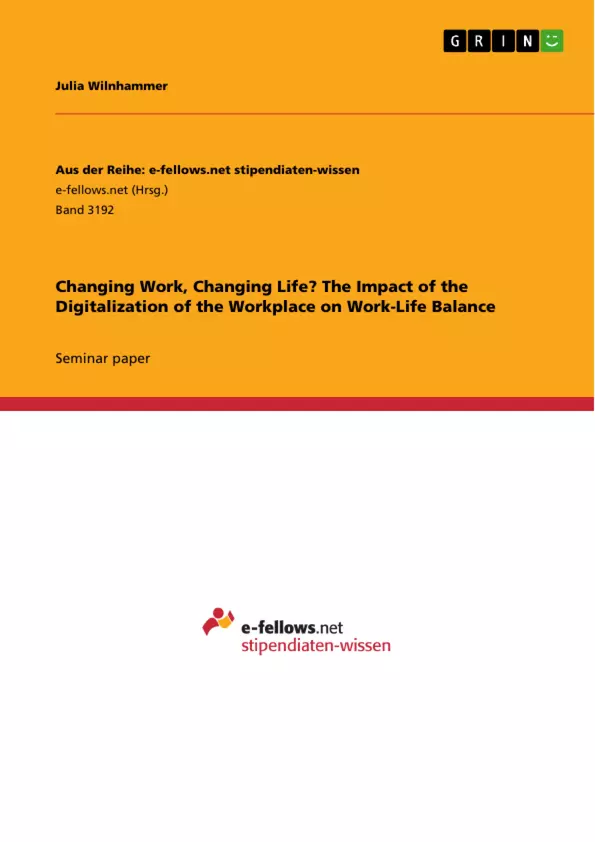Beside huge organizational benefits, the advent of digital technologies leads to intensified work demands for employees. The nature of information and communication technologies (ICTs) used at work and in private life may lead to feelings of digital stress and conflict between demands of work and life domains. The perception of this conflict hampers work-life balance when people’s desire is separated work and life domains (work-life segmentation). This term paper empirically examines, whether the level of digitalization of the workplace influences employees’ satisfaction with work-life balance, via an online survey of employees in Germany. Results indicate that digitalization of the workplace, through intensified electronic tool use, is not critical for lower satisfaction with work-life balance. However, theoretical investigation shows negative impacts of the digitalization of the workplace on the work-life balance of employees and emphasizes these impacts’ alarming importance for organizations redesigning work for a more supportive work environment.
Inhaltsverzeichnis (Table of Contents)
- Introduction
- Theory and Derivation of Hypotheses
- Definition of Key Terms and Concepts
- Digitalization of the Workplace
- Work-Life Balance
- Individual and Organizational Outcomes
- Outcomes of the Digitalization of the Workplace
- Outcomes of Work-Life Balance
- Derivation of the Hypothesis and the Research Model
- Method and Data
- Data Collection and Measures
- Sample
- Results
- Discussion
- Conclusion
- References
- Appendix
Zielsetzung und Themenschwerpunkte (Objectives and Key Themes)
This term paper aims to investigate the potential relationship between the digitalization of the workplace and employees' perceived satisfaction with work-life balance. The paper seeks to understand whether the increasing use of digital technologies at work influences employees' ability to balance their work and personal lives.
- The impact of digital technologies on work-life balance
- The influence of digitalization on work demands and stress levels
- The blurring of boundaries between work and personal life
- The role of work-life segmentation in navigating digitalization
- The significance of a supportive work environment for employee well-being
Zusammenfassung der Kapitel (Chapter Summaries)
The introduction highlights the rapid and pervasive digitalization in the 21st century, which is transforming the way work is done. It also emphasizes the potential risks and downsides associated with digitalization, particularly the increased workload and stress for employees.
The "Theory and Derivation of Hypotheses" chapter defines key terms and concepts related to the study. These include digitalization of the workplace, work-life balance, and work-life segmentation. It also outlines the individual and organizational outcomes associated with both digitalization and work-life balance.
The "Method and Data" chapter details the research methodology, including data collection and measures, as well as the sample used for the study.
Schlüsselwörter (Keywords)
The key terms and concepts explored in this paper include digitalization of the workplace, digital stress, work-life balance, work-life segmentation, ICTs, employee satisfaction, and organizational performance.
- Quote paper
- Julia Wilnhammer (Author), 2019, Changing Work, Changing Life? The Impact of the Digitalization of the Workplace on Work-Life Balance, Munich, GRIN Verlag, https://www.grin.com/document/491728



